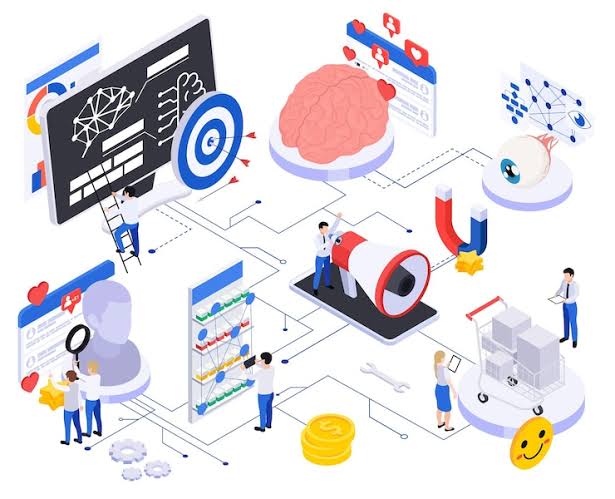Neuro-Marketing and AI: Unveiling Subconscious Triggers for African Engagement
In 1985, Coca-Cola was on the ropes. They were rapidly losing market share to their arch-rivals, Pepsi, and were in danger of being the #2 soft drink on the market. Pepsi’s “The Pepsi Challenge” campaign was a massive hit. A blind taste test where the majority of participants declared they preferred the taste of Pepsi to Coke. Pepsi carried that ball and ran, and it was only a matter of time before they ran past Coke. Something had to be done. Enter New Coke—a new and improved formula by Coca-Cola.
Preliminary testing for New Coke was highly successful. Blind taste tests revealed that most people preferred New Coke to Original Coke and, more importantly, Pepsi. Coca-Cola had done it. A successful counterattack. Right? Wrong. New Coke failed. Horribly. Before it even hit the shelves. Thousands of complaints were sent to Coca-Cola by consumers declaring they hated the new formula. But why? How could a better product deliver worse results?
The answer was all in the mind. Coca-Cola had spent decades advertising itself as a feel-good brand, a staple of every household, and the perfect accompaniment to every occasion. It was never just about the taste. It was about the brand. Original Coke was relaunched, and the masses rejoiced.
In 2004, another blind taste test was conducted, pitting Coke against Pepsi once again. Volunteers were scanned using Functional Magnetic Resonance Imaging (FMRI), which can identify activity in different parts of the brain as they drink their Coke or Pepsi. Again, over 50% of candidates preferred Pepsi’s taste. But this time, there was a twist. The test was taken again, and candidates were told which drink was which before they tasted it. And this time, Coke won by a landslide.
It was noted that a part of the brain called the medial prefrontal cortex, an area associated with higher thinking processes, was being used when volunteers knew what they were drinking. This showed that decisions were being made by the volunteers based on their memories or impressions of the drink and not just its taste. Pepsi may taste better, but it’s not Coke. And that is the power of Neuro-Marketing.
But that was all in 1985. What does marketing look like in today’s AI-driven world, where we have face and voice recognition and digital tracking?
Well, I’m sure we’ve all experienced those moments when we think or talk about a product, and suddenly, ads for that product start appearing everywhere. The truth of that mystery is, your smartphone isn’t eavesdropping on you. What a relief.
However, social media platforms have a more efficient way of tracking your interests using AI, even when you’re not actively using the platform.
Let’s paint a picture. You’re at a family lunch on a nice Sunday afternoon, and your cousin comes up to you and tells you about this great new delivery app he uses (we’ll call it “At Your Door”). You get home later that day, open your phone, and, without ever searching for or mentioning it yourself, your social platforms are filled with ads from “At Your Door.” How did this happen without ever mentioning the product yourself? That is an example of location tracking.
Platforms like Facebook can track user locations even when offline, given the user’s permission to do so. They could see that you and your cousin were in the same place at the same time, and since he searched for “At Your Door,” they figured you might be interested, too.
Another popular tracking method is eye-tracking. Social platforms can see what you see, know how long you look at what is on your screen, and whether you engage with what you can see or not. Simply dwelling on a particular post for longer than you usually would prompts social platform algorithms to show you that thing over and over again. These are the advantages of AI and technology in marketing.
Admittedly, it’s easy to see how the knowledge of what prompts a consumer to engage with or respond to a marketing cue using Neuro-Marketing, combined with the ability to track, utilize, and customize consumer activity both online and offline using AI technology, is a match made in marketing heaven. But all that still requires you to fully know and understand the nuances and triggers of the target audience.
In this case, the target is Africa, arguably the most diverse continent on the planet. As of 2022, the continent had around 570 million internet users, with Nigeria being the biggest user of internet connectivity with 100 million users. This is bigger than the entire population of the UK. However, this level of diversity presents a myriad of challenges for marketers. In Africa, one size does not fit all.
However, understanding the market triggers of different African countries requires a hands-on approach. It’s crucial to be fully in tune with the culture, beliefs, and values of the target audience. The use of AI and neuro-marketing greatly aids this process, but it’s a deep understanding of the local culture that truly makes a marketing strategy effective.
Nigeria, for instance, is a country of very proud people—pride in themselves and their country. That is what Heineken realized through neuro-marketing techniques when they started the distribution of Desperados Beer in Nigeria. A tequila-flavored beer that was quite foreign to the Nigerian market. Nevertheless, they understood the importance of bespoke and authentically Nigerian marketing because Nigerians are people who inherently love to support their own and see themselves in the ads and billboards.
Nigerians are also heavy users of social media, and the numbers support that. Keeping up with trends and having your finger on the pulse is highly important when marketing in Nigeria. Social media is one of, if not the fastest, way for brands to gain traction in the country. Knowing what’s trending, what people are talking about, and what people pay attention to—all of this is possible with the use of AI in marketing.
But Nigeria is, again, very different from all other African countries. The key to marketing in any capacity within Africa remains the willingness to do the groundwork—to go deep enough to understand the beliefs and culture of the people in a particular region or country. Companies that fail to do this tend not to make it in the African market. But with the aid of AI technology and the knowledge of neuro-marketing techniques, the possibilities are well and truly endless.
As AI technology continues to advance and the African market continues to grow, it becomes even more important that companies begin to capitalize on the possibilities within the continent. With an internet penetration rate in Africa of just 43% as of 2021, far below the global average of 66%, it is clear there is still so much untapped potential within the continent. Only those who have their finger on the pulse of innovation, as well as an understanding of the market, yet to reach its prime, will reap the rewards.
References
https://www.newscientist.com/article/mg18324585-700-they-know-what-you-want/
https://www.snopes.com/fact-check/new-coke-fiasco/
https://movius.ai/blog/neuromarketing-in-the-age-of-ai/
https://www.statista.com/topics/9813/internet-usage-in-africa/#topicOverview


